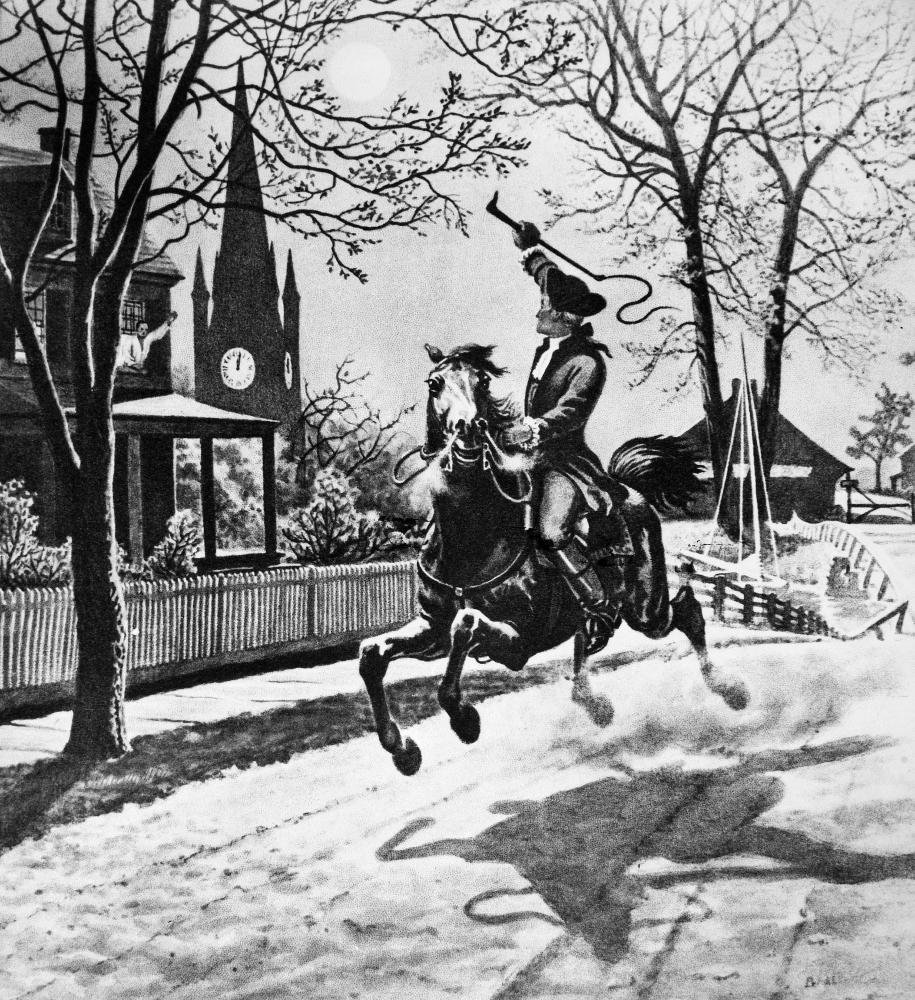In the “Been there, done that” Department, you might find this comparison to American’s first go-round with genuine Royalists in 1776 versus this coming storm with their wannabe Johnny & Joanie come-lately heirs useful.
If you have any understanding of Natural Law, (which I always write in capital letters in deference to its Creator) you will understand that America has not drawn a single breath from the moment of its birth in 1787 that there wasn’t a few wannabe royalists spread over the original 13 states.
They were always among us, at least in spirit, for it just seemed unnatural to some that people, ordinary people, should be able to walk around, their heads held high without owing a single thing to their betters, which is how it had always been done for thousands of years… everywhere…at least in a civilized world. The way they looked at it, that’s what separated civilized man from the feral jungle bunnies; a top down order in Nature.
So, based on what you know about the social psychology behind that “royal mindset” in modern America today; wealth, rank and status, education, you can even make a fair guess as to what segment of American society had elements of that thinking in 1776, and well into the 19th Century by the War of 1812, when we fought the British a second time.
A few demographics should give some perspective. In those 36 years between the Declaration of Independence and the Battle of New Orleans, the American population had grown from 2.5 million to 7.7 million, over 300%, at an annual rate of over 3%. But we had a sense of this “rank” thing well before the Revolution, noted by the way in which 5th generation Puritan Massachucks mistreated new arrivals from Protestant Northern Ireland, who began arriving thru Boston around 1715, a century after the Massachusetts Bay Colony was established as a Crown Colony. A quarter of a million of those “hill-Williams” (250,000) are estimated to have arrived and settled before 1770, and for the most part settling what was known as “the West”, which at that time was along the Appalachian rim. If you were a third-generation townie around Philadelphia, and they came through your town, usually in groups of 100 or so, you too would cop an attitude about the strangeness of their speech and backwardness of their manners. Third generations have always gotten on this way with new people on the block since time immemorial, and a lot of natural laws and time are involved in sorting those differences out.
But it was in America that those rules were written, for no other society ever had to try it. For in Europe those differences were simply frozen in place, going back over 1000 years, graded by bloodlines and rank; the nobility, the church, the bourgeoisie, and the farmers. And by the 1700s there arose a non-church based clerical base, what we now call “the bureaucracy”, all necessary elements of a well-ordered society.
Although the English kings (there were several) were always recognized as sovereign over their colonies in America. It was not until 1763, and the French and Indian War, in which the American colonists played a big role in helping defeat the French, thus allowing the English to bag the big prize in North America, Canada, that the handshake turned into a fist. Instead of big cook-out “thank you” party for our help, having nearly gone broke in winning that war, the English Crown began demanding the Colonies to pay their “fair share’ of the cost. Taxes. Who knew that borrowed money from bankers-of-questionable-bloodlines in Holland had financed the whole thing?
I’m not going to bore you with this 13-year trek to revolution, except to note that it only took thirteen years for the work-a-day American colonist to go from loyal-to-the-Crown colonials to rebel-with-a-cause.
To know specifically what really scalded them, just read Thomas Jefferson’s Declaration of Independence, which, once he got past its most memorable lines beginning with “We hold these truths to be self-evident”…reads as a very detailed indictment. This is the part most people still don’t read, so I suggest you do it, for the Declaration of Independence wasn’t just a heart-tugging church altar-call, it was an out-and-out indictment; a bill of particulars. And what inspired it was not the Boston Massacre in 1770 or the Tea Act of 1773 so much as a 57-page pamphlet by Thomas Paine in 1775 called “Common Sense” which even today stands as the biggest (per capita) bestseller in American history.
Now, I know, except for that Owner’s Guide to your John Deere mower, or maybe your new iPhone or iPad, 57 pages seems like a very very long read. But maybe it would be a good habit to read the entire 1458 words of the Declaration as a warm up, and then work your way up.
And, since we’re on the subject, try the 29 pages, Chapter Three, “Colonies No More, 1763-98” of Schweikart and Allen’s Patriot’s History of the United States. (It’s the only book I have that is more underlined is my Jerusalem Bible, which JRR Tolkien co-edited, btw.) You can’t own a better reference, and that’s how you read it, a few pages at a time, as circumstances dictate. It’s not an Agatha Christie murder mystery, so you don’t have to read it straight thru, but rather, like the Bible, only on an as-needed basis.
Herein begins the lesson about how the sides are likely to square up:
If you’ll use your own God-given common sense, you can see that everything you are seeing today has been done before…and right here in America. And just like 1776, only you can assign yourself a role in participating in it.
In 1776 they drew up sides almost identically with the way the sides are chosen now. George III had his employee-allies here, mostly from the colonial front offices; the governors, the tax collectors, most of the college professors, and their office clerks (pronounced “clark” in England, and which is why you see so many more Clarks in America than Wainwright’s or Collier’s….most towns only one of those, but had dozens of “clarks”.) And of course there were troops, which really didn’t make their presence felt until we started getting a little rowdy; Boston Massacre, 1770, Boston Tea Party, 1774.
But in terms of power, although they probably numbered no more than 35% of the population, their political power was very large. Even many 3rd-4th generation landlord squires looked down upon Thomas Jefferson, still in his 30s, as a turncoat to their class as he was the son of a surveyor, having married into property. Nouveau riche.
In America today, we have a similar government class, bureaucrats all answering to teams of elected officials, from county court clerk to deputy attorney general, three levels of government; local, state and federal, each with offices in every major city in America. But on a per capita basis, comparing 2.5 million in the Colonies in 1776 and 2.5 million in say the Greater Richmond, VA area, and surrounding counties, it’s not as great a spread as you’d imagine.
But their loyalties ran in the same directions as they do now…the only difference being they didn’t have a Tom Paine or Tom Jefferson. Because of Tom Paine, it was the people in every colony who told their delegates to the Continental Congress to get up off their sleepy arses and send these troops the Brits had demanded quarters for packing. Enough!
And they were also armed. Not to the teeth as some of my neighbors, mind you, but wisely secretly. I still know more about their wastrel daughters who won’t move out, or a gay son, than I do about how many guns, and what caliber, they have buried around.
The spark that set off the Revolution was the English sending troops to capture an arsenal at Concord, after a skirmish in Lexington. You might read up on exactly what Paul Revere and his his mates did that 18 April, 1875, for it is not unlike the door-knocking and walking the streets that so many Americans are now doing to get voters ready for the coming 2022 (and 2024) elections. (To get involved, see Dan Schultz, and his Precinct Strategy and follow him, @DanScultz and Jaded by Politics, @B-Gawk, at Twitter, and who really are modern-day house-to-house Paul Reveres.
The answer to “To arms, to Arms” began with a Declaration of Independence with an itemized indictment.
So, just like 1776, it will likely begin with the Royals pulling another Lexington and Concord stunt as the Capitol Insurrection stunt begins to fall down around their ankles.
You’ll know when. Just use head for common sense and a little improved reading and common sense thinking and planning, and less knee-jerk squawling.
Stay tuned.




